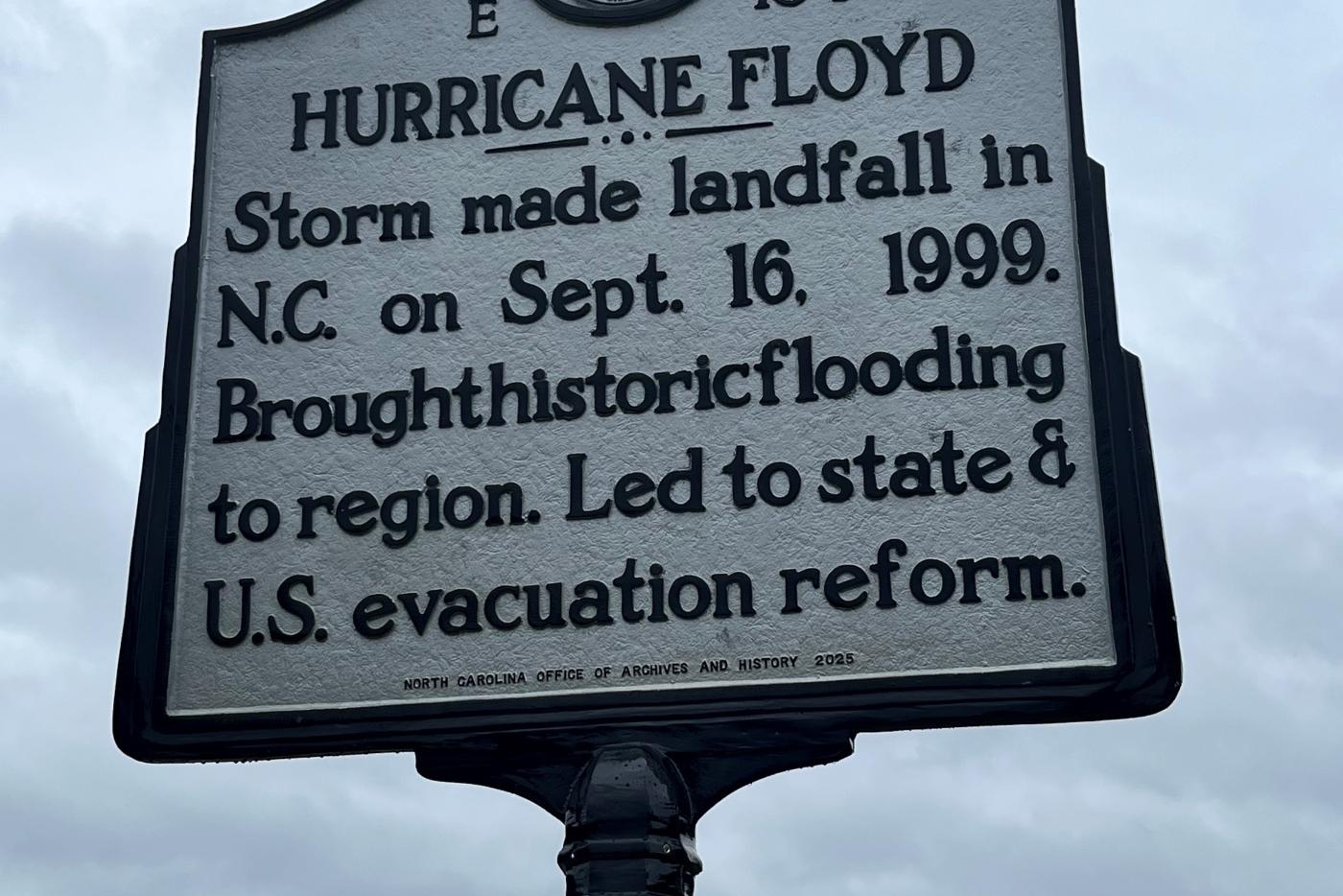Hurricane Floyd was a frightening 155 mph hurricane as it spun through the Bahamas in mid-September, 1999. It approached Florida as a massive, powerful storm, but turned as it neared the coast and headed north, weakening over the next day. It headed toward North Carolina’s coast as a diminished category 2. It made landfall near Cape Fear on September 16, 1999, with winds that gusted above 120 mph. Significant coastal erosion and structural damage occurred in Brunswick and New Hanover Counties, but Floyd was far less destructive at the coast than many had feared it might be.
The real disaster unfolded in the following hours and days when unprecedented, record-breaking floods spread across eastern North Carolina. The rain that arrived with Floyd fell on a landscape that was already saturated. Hurricane Dennis had passed over the same area just weeks before, and almost all rivers, creeks, and ditches across the east were at capacity before Floyd arrived. The excess water rose dramatically into homes, businesses, factories, farmlands, and highway systems. Eastern North Carolina experienced what some called a 500-year flood, certainly flooding at a level previously unreported.
The rapid rise in floodwater during the first night of the storm caught residents in several eastern counties off guard. Thousands of residents became trapped in their homes or cars, and the effort to save them was unprecedented in North Carolina’s history. Over the following days and weeks, at least 1,500 people were rescued by helicopters from rooftops, cartops, and treetops. Hundreds more were saved by small boats; dozens were taken from their attics by deputies in small skiffs. Many of the rescues involved neighbor helping neighbor, as at the time there were inadequate swift water rescue teams in the state. Floyd’s impact lingered on long after the storm spun northward through New Jersey. NC rivers continued to rise for many days, submerging highways and neighborhoods in floods that did not recede quickly.
The storm’s economic toll on the state was unprecedented at the time. Sixty-six NC counties received federal disaster declarations. Floyd caused $6 billion in damages in North Carolina, making it by far North Carolina’s most costly natural disaster. Agricultural losses were massive and made national news. Residents and state and local officials struggled in the recovery effort to deal with complex issues. The economic impact was felt throughout the state as the flood caused changes in legislative funding priorities.
References:
North Carolina’s Hurricane History, 4th edition (UNC Press) by Jay Barnes
Faces From the Flood (UNC Press) by Richard Moore & Jay Barnes
National Hurricane Center website www.nhc.noaa.gov

